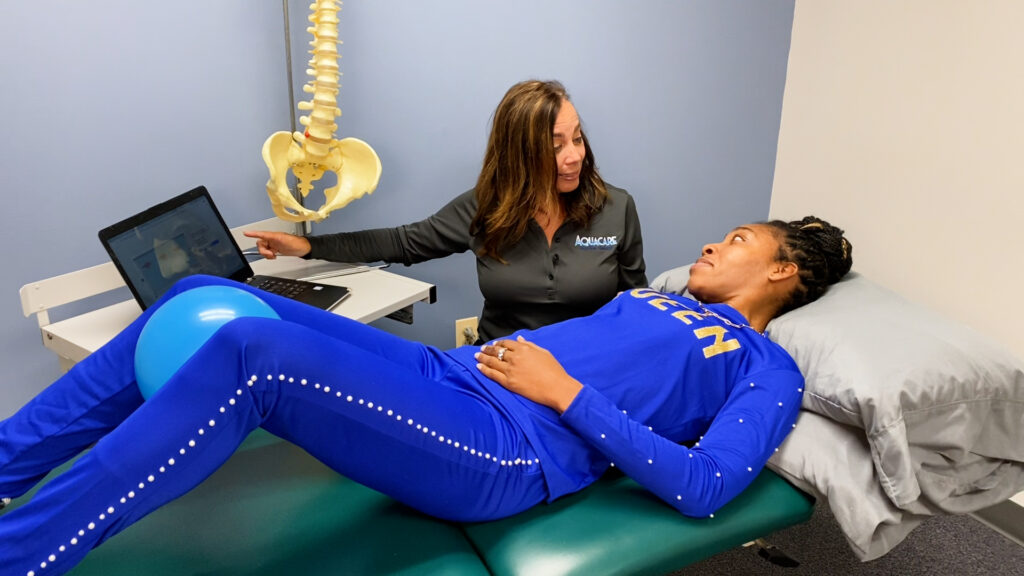
When Should You Get Your Pelvic Pain Evaluated?

What is pelvic pain? Pelvic pain is a broad statement that includes several diagnoses for both men and women. Pelvic pain can stem from reproductive organs, non-reproductive organs, such as the large intestines, trauma, and pregnancies.
Some common diagnoses are pudendal neuralgia, endometriosis, polycystic ovary syndrome (PCOS), pelvic congestion syndrome, interstitial cystitis (IC), dyspareunia, male or female chronic pain syndrome, chronic constipation, irritable bowel syndrome (IBS), chronic prostatitis and testicular torsion.
This is just to name a few common diagnoses. People can also have pelvic floor dysfunction, which is the inability to relax and coordinate the pelvic floor muscles. This can be caused by some of the above diagnoses.
Physical therapy can help pelvic floor issues, and our specialized team can help address those syndromes with a variety of tools and exercises.
What to expect with pelvic floor physical therapy
Someone’s first session would consist of reviewing past medical history, a possible internal examination of the pelvic floor muscles or utilize surface EMG biofeedback to assess the pelvic floor muscles, assessing the low back and hip region, discussing daily symptoms and functional limitations.
Then the physical therapist and patient will determine a plan of care and how often someone should be coming to PT.
In sessions following the initial evaluation the therapist will focus on addressing the daily symptoms; some symptoms can include difficult or painful intercourse, difficult or painful urination and bowel movements, and pain with walking, standing or sitting.
Manual techniques help address these symptoms and can include internal muscle releases, visceral mobilizations to the abdominal region, and total peripheral resistance or TPR to external muscles that connect to the pelvic region.
Surface EMG biofeedback will be utilized in subsequent sessions as well. Surface EMG biofeedback is a machine that is used during treatment sessions for assessment and treatment purposes. It allows the therapist and patient to see what the pelvic floor muscles are doing in real time, this can help relax any tension that may be present in the muscles.
The therapist will also discuss proper diet habits, water intake, toileting habits and sleeping patterns that can improve symptoms and quality of life.
If you or someone you may know may benefit from seeing a pelvic floor therapist, please give one of Aquacare’s offices a call. While I work at the Salisbury—Injury Center location, Aquacare therapists provide pelvic floor treatment at Salisbury—Milford Street, Easton, Lewes, Millville, Millsboro, Milford and Seaford. Aquacare will open a new office in Berlin in July that will also offer pelvic floor physical therapy.
Call the office closest to you or schedule through our website at www.aquacarephysicaltherapy.com.
Kaitlyn Smith, PTA, clinical director of Aquacare Salisbury—Injury Center, treats both men and women with pelvic pain and pelvic floor diagnoses.
















